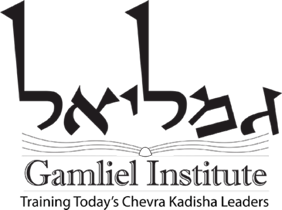Arrangements to Be Made
When death arrives at your door, there are many practical arrangements that must be handled almost immediately. This task is in addition to the raw emotional burdens of facing the immediacy of death and beginning the mourning process. (If pre-need funeral and burial arrangements have already been made, that will simplify your work. You can then just meet with clergy to have those arrangements implemented.)
Here we help you navigate what arrangements are necessary from a very simple and practical perspective. For more information about Jewish practices at the end of life, see the Jewish End of Life Practices page.
Arranging Taharah and Shmirah
As mentioned in the “What to Do Immediately” tab above, you should be in contact with your rabbi, synagogue, or Chevrah Kadisha in order to set in motion the traditional Jewish practices of ritual preparation of the body for burial (taharah) along with loving accompaniment of the deceased between death and burial (shmirah). These are traditional, but that does not mean they are for the observant only; rather these beautiful rituals are for all Jews. Through contacting a rabbi, synagogue, or chevrah, you can specifically request that your loved one be taken care of in the traditional manner with taharah and shmirah. They will then know what to do and who to call to make these happen appropriately and in a timely manner.
Arranging a Funeral and Burial
Planning for the funeral and burial of a loved one should be done in consultation with a rabbi or other clergy who can guide you through this process. You may have some options as to the location/venue, which may also affect the structure, flow, and logistics of the funeral.
These options may include:
- Funeral Home/Funeral parlor
- Synagogue
- Graveside
- Home
- At some distance (for example: where the deceased lived prior to arrival at the place of death, where other relatives reside, or in Israel)
Sometimes the funeral service is held as part of the graveside burial. In other cases, there is a separation in time and space between the funeral service and the burial. A graveside service alone may be preferred when there may not be many mourners or because of cost considerations.
The option selected for location may impact various concerns:
Choices:
Options such as Instrumental musical accompaniment may be permissible at a funeral home, whereas it may not be permitted at a synagogue, and it may be impractical at a graveside service. The choice of location may also impact such things as: availability of private rooms for the family to gather and meet with the rabbi or other officiant before the funeral; options for ‘visitation’ times to speak to family members before the funeral; parking for those who drive to the funeral; and the option to line up cars for the caravan to the cemetery.
Another option that may impact the structure or flow of the funeral is the inclusion of military or masonic honors, or burial at a military cemetery. Any of these may also impact the timing of the funeral.
Transportation:
A funeral that takes place at more than one venue will require that the casket (and meit) be moved from one location to the next in stages. For example, if the service takes place at the funeral home or synagogue, then the casket will generally be there during the service. Afterward, it will need to be transported to the cemetery, and then carried to the gravesite.
Likewise, the attendees will have to go from one venue to the other. Often the funeral home provides cars for the mourners in addition to the hearse.
In some instances, there may need to be involvement of the police for traffic control, especially if the group going from the funeral service venue to the cemetery in caravan.
Involvement and Logistics:
Traditionally, a funeral would be held in a synagogue only for community leaders, scholars, or other important persons in the community. Some congregations follow this practice, while others (especially non-Orthodox) do not. If you wish to use the synagogue for the service, you will need the approval of the rabbi.
A funeral held at a funeral parlor may allow more flexibility in terms of officiants, and limit the number of stages of transportation, but may raise other issues.
A home funeral may insert logistical issues such as space, seating, and parking. It may also require an additional transportation step, as the meit may need to be brought to the home from the funeral parlor.
A graveside service is often the simplest, but it also offers the least variation. There is generally little seating and minimal or no protection from bad weather.
Obtaining a Burial Plot
Usually consultation with clergy can facilitate purchase of an appropriate cemetery plot. In some cases the Chevrah Kadisha personnel can help arrange for a plot in the cemetery of choice. Usually this can be taken care of while making the other burial arrangements. As with other details, pre-need arrangements can make the situation less stressful.
Getting Guidance and Support
Every family is different, every death is unique. Finding support, guidance, and the information you need, when you need it, can be challenging, especially when you are overwhelmed by the emotional impact of a death of someone you love. In most communities, the local rabbis, chaplains, and even some Chevrah Kadisha members are trained to do exactly this: provide what you need at this sensitive time, in a sensitive manner.
If you have a relationship with someone in the clergy, even if they are not local, call them. Get them involved and active in providing the support you need. If they cannot help you, they will know whom to call who can help. Even if you are unaffiliated, you can simply contact a local synagogue to ask who might be available to help you handle death arrangements and to provide emotional support. Most communities are prepared for this and can easily provide the support and information you need.

